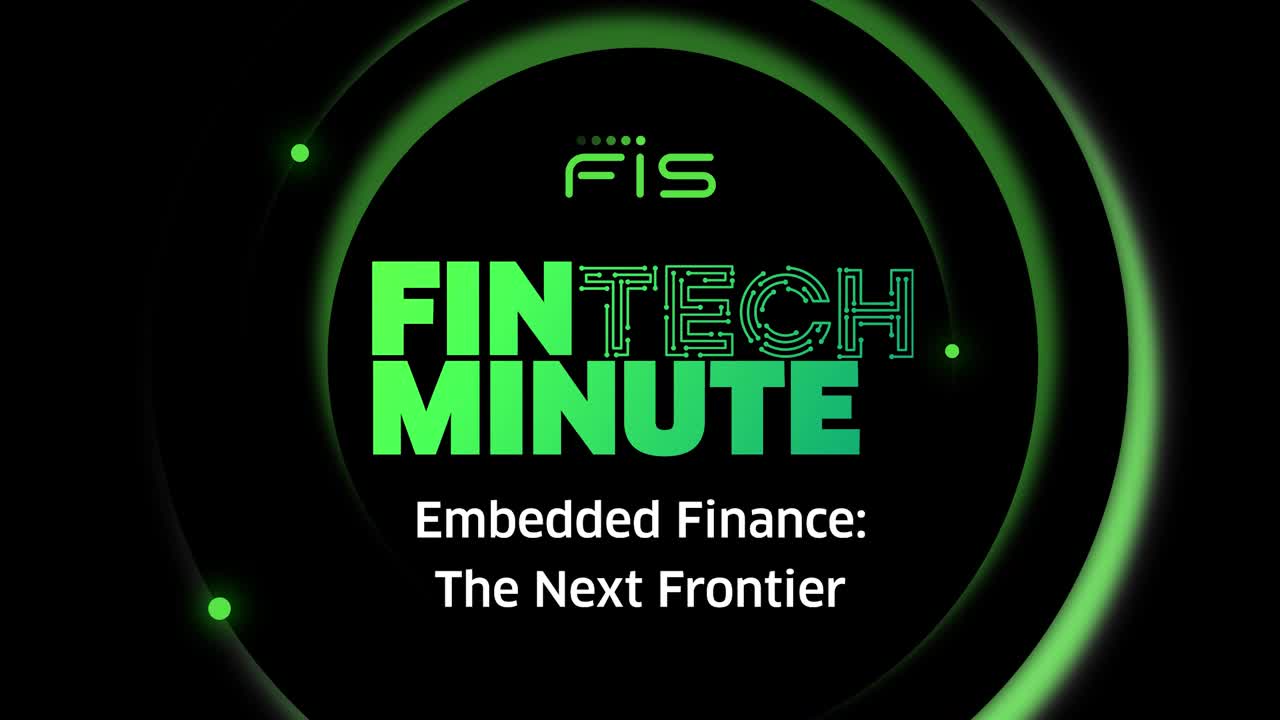The future of embedded finance
November 02, 2023
Embedded finance is disrupting financial services by blurring the lines between traditional financial institutions and non-financial business. It’s not new, and in fact has been available for quite some time. But changes in the way we live and work have certainly accelerated the proliferation of embedded services offerings as businesses strive to meet new consumer expectations.
But what exactly is embedded finance, and why should your institution look to the service as a way to meet customer needs and demands – all while driving new revenue opportunities?
What is embedded finance?

Learn more about the benefits of embedded finance in this video featuring Mike Kresse, SVP, FIS®.
Embedded finance involves the merging of a non-financial service provider such as a retailer or a utility company with a financial service such as payment processing, lending or insurance. Embedded finance allows organizations to pay people remotely, get paid remotely and avoid having to handle actual paper checks or go into a physical location to cash a check. As stated, the idea is not necessarily a new one with embedded payment providers such as FIS having a long history of delivering these technology services for large corporations. However, during the pandemic many small to medium businesses (SMBs) failed to keep afloat because they did not have the ability.
As the benefits of offering financial services were becoming apparent, technology too was evolving in parallel. Application program interfaces (APIs) enable the necessary technology of various open banking initiatives around the world. APIs allow data to be exchanged in real time so systems – and apps – can easily embed financial capabilities such as payments to increase customer engagement and build loyalty.
Banks and credit unions of all sizes are seeing the value of extending embedded services through third parties. Banks can broaden their customer bases, develop new revenue sources in the form of fees from third parties and stay relevant as big tech and fintechs offer consumers high-concept apps. Embedded finance most certainly can be a positive for banks. It can provide access to new markets while reducing customer acquisition and servicing costs. Embedded finance offers ways for banks to monetize without raising costs to their customers. This enables companies to seek out banks to assist with their core offerings. In essence, the businesses focus on what they do best while allowing banks to do the same.
Where is embedded finance headed?
As more of Gen Z enters the workforce and their spending power increases, their expectations for how they pay, bank and invest are driving many businesses’ financial technology strategies for 2023.
In a recent article on globalbankingandfinance.com, Silvia Mensdorff-Pouilly, SVP Banking & Payments Europe, FIS, stated, “Our research shows the scale of demand for innovative financial experiences. In the next 12 months, over 70% of younger consumers say they plan to shop via social media, 67% plan to explore checkout free supermarkets and, despite its mixed reception in 2022, 64% of Gen Z shoppers plan to access the metaverse in 2023.”
This demand will also bring increased opportunity. Mensdorff-Pouilly went on to say that advanced technology ensures that a myriad of financial services can be embedded into the places consumers choose to spend their time and money.
“Embedded finance is the invisible back-end technology that makes these modern payment experiences possible,” she says, “and we expect embedded finance to explode in 2023.”
However, it’s also important not to get complacent about embedded finance because its success depends on the ways in which it is applied. A potential pain point for consumers is having to wade through reams of offers when buying a plane ticket or renting a car online, for example.
To achieve a true embedded finance experience, businesses need to leverage the wealth of data they have and apply artificial intelligence to ensure customers are presented with the most appropriate products and services for them precisely at their point of need. Mensdorff-Pouilly also said that if embedded finance spirals into presenting more and more untailored offers to the consumer, then it will simply turn them off.
In her closing thoughts, she says, “The industry is heading in the right direction, and we have the technology that is required to provide consumers with a much faster, smoother and more intuitive user experience. From enabling the creation of ‘everything apps’ or VIP loyalty experiences based on NFTs, we will increasingly see embedded finance opening the door to brand new revenue streams in 2023, providing opportunities for banks, insurers, fintechs and other financial service providers to meet consumers where they are now and in the future.”
While it’s true that embedded finance is seeing more and more non-financial services companies encroaching into the banking space, there is ample opportunity for banks and credit unions to leverage it and successfully offer a version of embedded finance to their customers.
- Topics:
- As a Service
- Embedded finance
